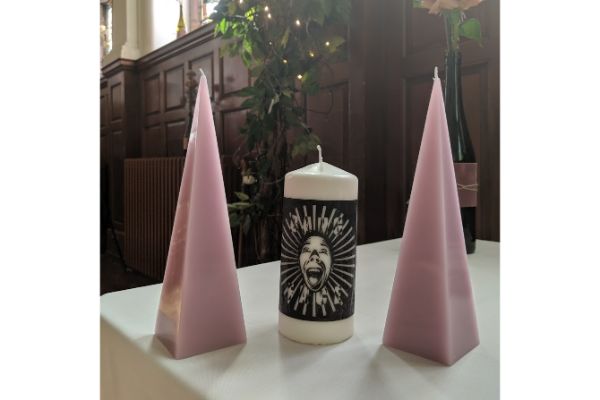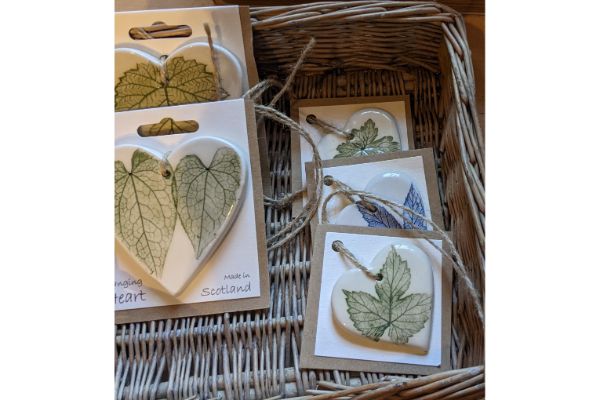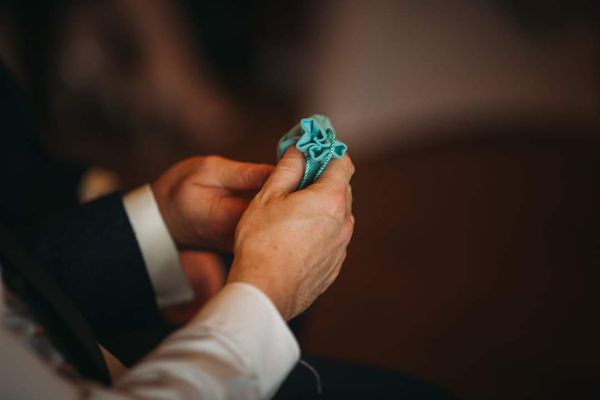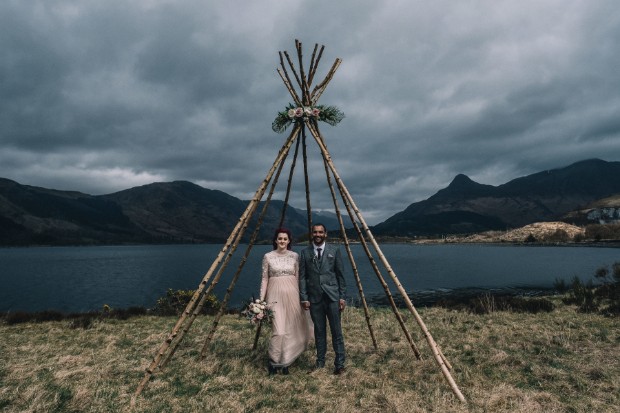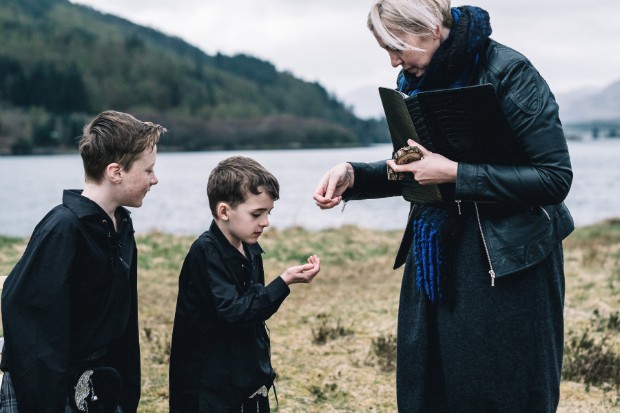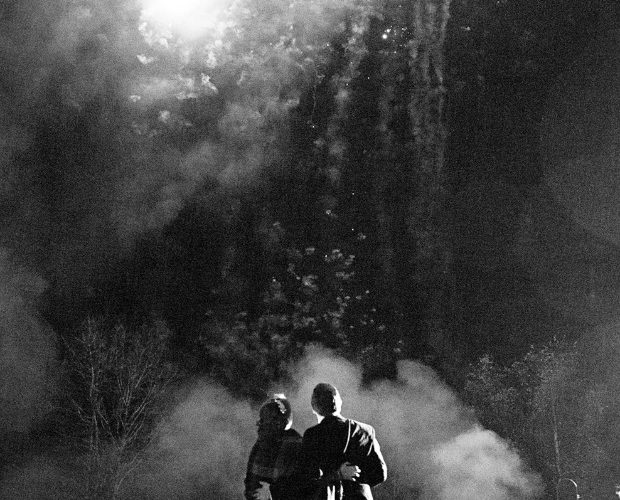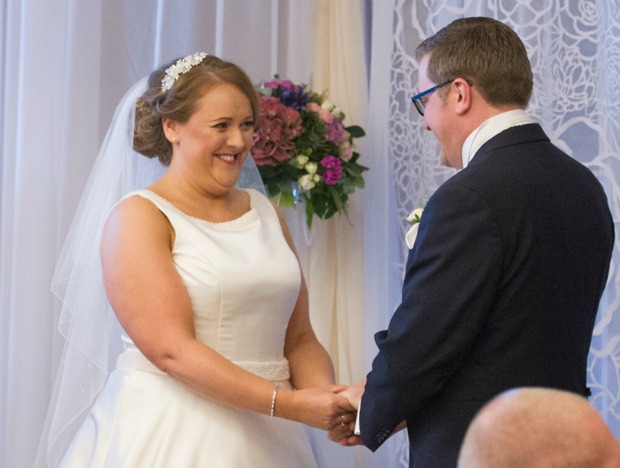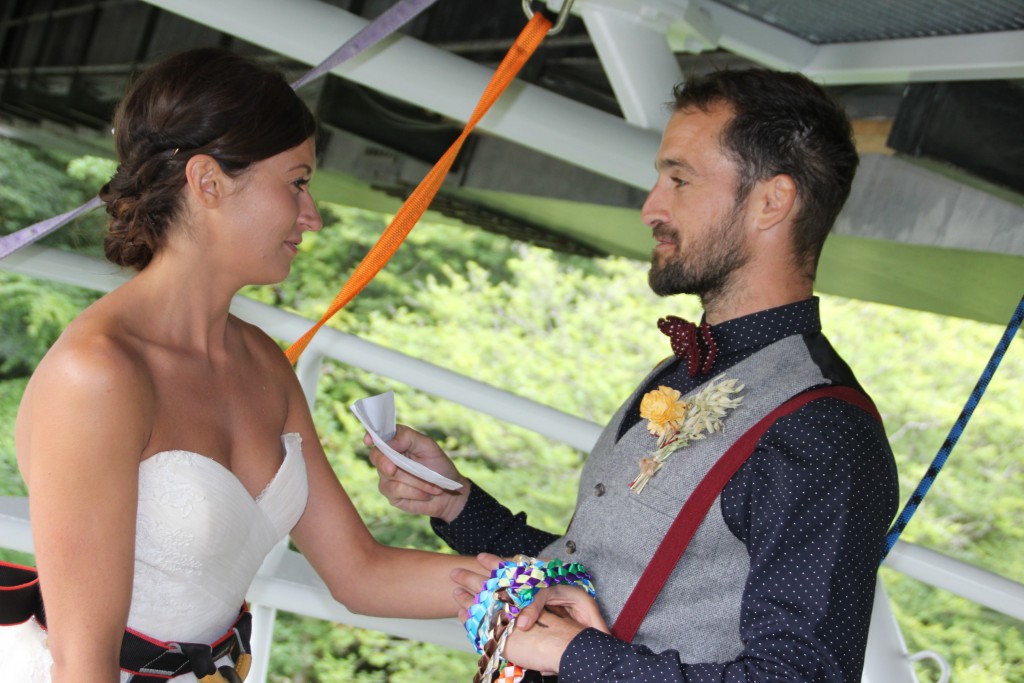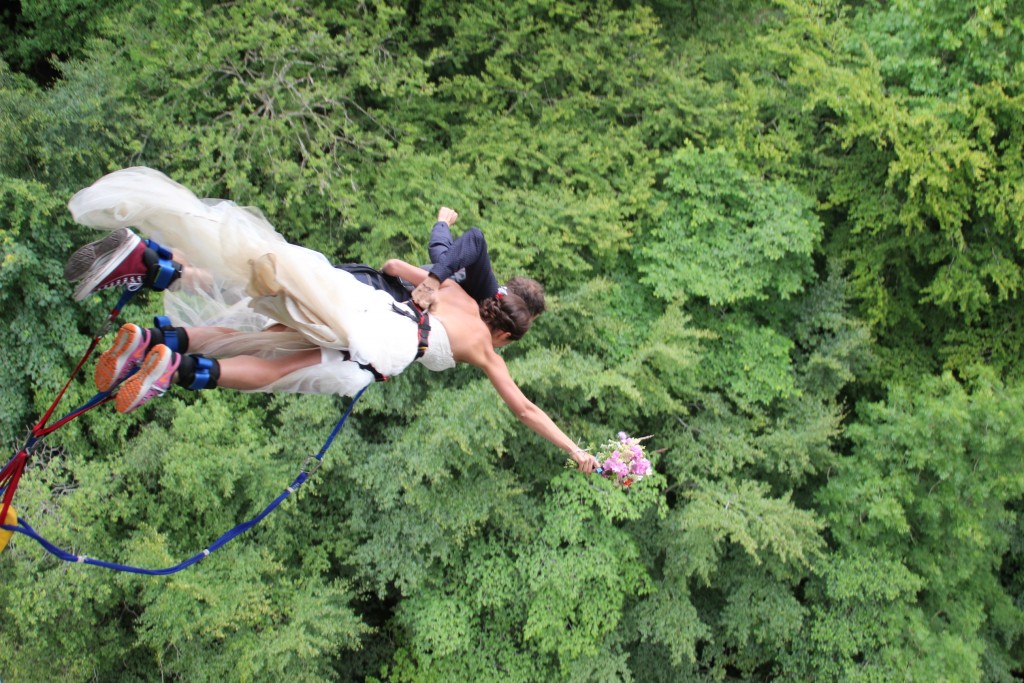In case you’ve skipped the pilot and have launched straight into Episode 2, there’s another part to this post. It’s here. Read it already? Well, buckle up, buttercup, there’s more quality symbolic goodness heading your way RIGHT NOW!
HAND FASTING
Probably tied with the quaich for popularity. See what I did there? ‘Tied’?

History: Properly Scottish. Been around for ages. In ye olde days, it was a temporary marriage and could be undone a year later if no boy child had been produced. Awkward. We don’t mention that.
You can use anything you like to be handfasted: handfast tartan, ribbons, scarves, ties, if you can tie a knot in it, you can be handfasted with it. Each tie should be between 1.5-2m long and, ideally, no narrower than 5cm. The width isn’t hugely important but the narrower it is, the harder it is to see from a distance. If you have thin ribbon, consider sewing it onto a thicker one so it shows up better.
There are two main ways to be handfasted and countless variations of both:
You can be bound together. This is simple, traditional and can be done with one, two or more handfast ribbons/ties. It’s the perfect way to involve people in your ceremony as they bring up your ties, and tie them around your joined hands. You can either leave it at that or, if you’ve used two or more single ribbons, they can be tied together.
You can tie a knot. This is a bit more theatrical. The ribbons/material are arranged round your hands in such a way that when you pull the ends, it ties a knot in the middle. Taaa-daaaaah! Either I can arrange the ribbons or you can do it yourself. There’s something very pleasing about you handfasting yourselves. Appeals to me. It’s pretty straightforward to handfast yourselves but I strongly encourage a couple of practice runs.
SAND CEREMONIES
I’m going to level with you. Not my favourite. This takes AGES to do and is always messy. Kids nearly always chuck all their sand in the vase in one go and you will be horrified for the rest of your life that there’s a massive BRIGHT RED LUMP SPOILING IT ALL.
I have seen it beautifully done with sand from different countries. By adults.

You could write your vows on wee bits of paper, read them to each other either on the day or privately the day before and then pop them in the bottle before you fill it with sand. Like a sandy message in a bottle.
OATHING STONE
History: Pretty decent Scottish connections. Meant to connect you to surroundings and nature. Based in ancient Celtic tradition. Great for wild ceremonies or ceremonies next to a loch. Bit weird in a hotel in Larkhall.
You need a stone, preferably one small enough to hold enclosed in your hand. You can choose a stone from somewhere special to you, like the spot you had your first kiss or got engaged, or you could wait until your wedding and pick one up then.
When you make your vows, you hold the stone in your hand. Once you’re done, you can keep your stone or you can throw it in the loch, sea, whatever body of water you’re getting married near. Skim it if you don’t mind derision from the banks when you fail miserably.
Alternative use of stones: You could also use the stone instead of rings for a band warming. You could get loads and paint them, get kids to decorate them, get your guests to bring their own from a place they love. They can write on them (or not) and everyone chucks them in the loch at the end or you keep them all in a jar.
GIFTS TO PARENTS
You could recognise your lovely parents (or other special people in your lives) by giving them a gift during your ceremony. Who doesn’t love a present? What you give them is up to you but previous examples have included roses, a photo, a necklace, 200 cigarettes and a personalised lighter…
OTHER THINGS PEOPLE HAVE DONE
- Invite guests to leave words of marital advice in a jar or, on one exceptional day, on post it notes stuck to a life-size cutout of Tom Hanks.

- Gave every guest a flower as they arrived and asked them to come up during the ceremony and place them in a vase.
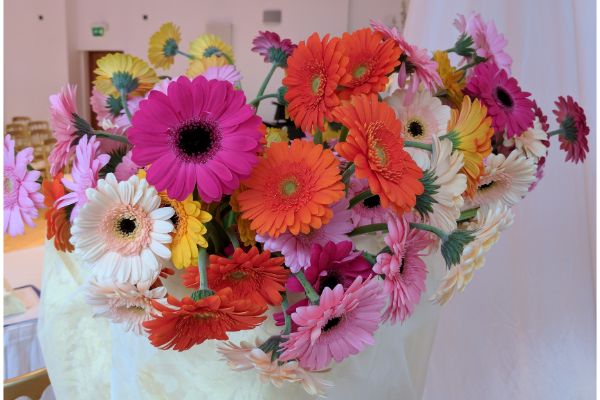
- You could exchange family tartans, books or objects representing your heritage or family history. If you do this, make it equal, non-patriarchal, none of this Man accepts Woman into clan pish.
- If you proposed near water, go and get some in a wee bottle and have someone sprinkle over your joined hands. Even better if you’re being bound together in a handfast because a wet knot is harder to untie (that’s also a good ‘un to come out with if it’s pouring on your wedding day. Everyone LOVES it)
- There’s historical symbolism in lesbian and bisexual women exchanging or wearing violets or lavender. Gay men might exchange green carnations or blue feathers. Or something else you think is symbolically important to you.
- Wager cup. Dutch? German? Cup looks like a woman carrying a bucket and one drinks from the bucket, one from her skirt. Fastest to finish wins.

EXAMPLES OF SYMBOLIC GESTURES WITH CULTURAL ROOTS
I would avoid choosing these unless they are culturally significant to you.
- Placing of Jaimala (Hindu floral garlands) by parents
- Glass smashing (Mazel tov!)
- Greek Stefania (crowns)
- log sawing (energetic Germanic, usually done post-ceremony)
I WON’T INCLUDE:
- Balloon, lantern, dove or butterfly releases. Environmentally terrible and, in the case of the butterflies, they rarely survive once released. Not great.
- Bloodletting ceremonies. I’ve been asked. The answer is always NO! ARE YOU MAD?? OUTLANDER ISN’T REAL, YA FUD!
Featurd image at the top of this post of the glorious Ginny and the Tonic quaiching it up big time c/o Tub of Jelly











